I’m not the biggest fan of children, I don’t like anyone that screams that much, to be fair, so you can imagine my excitement when I was told we were off to a five-year old’s birthday party on Saturday.
My girlfriend demanded we go and the gathering was out at Wilton of all places (80km south of Sydney). The only reason I didn’t throw a hissy fit was because a Hyundai i30 Premium was at my disposal.
This would be the ideal opportunity to see how Hyundai's best-selling car performs weekend duties.
Saturday
Before heading to the party, we had to pick up a last-minute present from Toys R Us.
We weren’t well prepared and what was meant to be a quick trip turned into half an hour stuck in Sydney's glorious traffic.
This did give me time to get better acquainted with the features of the Hyundai i30. Our test car was the Premium model, which sits behind the SR Premium and N models in the i30’s range.
Headlining the cabin is an 8.0-inch touchscreen (standard across the range) that comes with built-in sat nav, digital radio (DAB), Bluetooth, Apple CarPlay and Android Auto.
.jpg)
Other noticeable equipment includes the panoramic glass sunroof, wireless phone charger and front vented and heated seats. The gadget list is substantial.
Once at the shopping-centre car park I discovered a neat safety feature that should be added to all new cars. When selecting reverse, the radio/music volume automatically lowers so the driver can focus on parking.
It’s a small addition but a useful one and it shows Hyundai is going above and beyond the competition to include handy features like this.
After grabbing the present - an astonishingly expensive tiny piece of plastic - it was on to Wilton for an hour’s drive but once again Sydney traffic was determined to make us late. I wasn’t worried because, number one, I wasn’t in a rush to get there and number two, I was very happy in the i30.
It’s a genuinely nice place to be. There are leather-appointed seats, as well as a leather-trimmed steering wheel and gear knob. There’s a quality feel to the Premium, nothing feels cheap and it’s evident that the Koreans are showing the Japanese how things are done and, whisper it, are even gunning for the Germans.
.jpg)
The one thing that lets the interior down is the lack of colour; everything is black and it feels like a goth teenager’s closet. Thankfully, you can option beige leather, which is harder to keep clean but certainly brightens up the cabin.
Once we arrived at the party, the hatchback received a handful of positive comments, everyone seemed genuinely impressed by it. Some people still associate Hyundai with cheap and nasty cars, but the brand has (mostly) shaken off that stigma and continues to surprise people with how far it has come.
It’s a smart-looking vehicle, even the base model i30 is attractive and the Premium is downright handsome, thanks to a unique shape, 17-inch alloy wheels, daytime LED running lights and a blacked-out spoiler. I even noticed someone checking it out up close while everyone else was having lunch; 10 years ago no one would even look twice at a Hyundai, particularly when fun was to be had on a jumping castle.
By the end of the day I was itching to get back into the i30, not just because I was surrounded by screaming kids, but because it provided a pleasurable experience that I couldn’t get tired of.
Sunday
On Sunday I was on a mission to find a quiet and challenging road, so I could test if the i30 was hiding some sporting potential under its pretty face.
Still not knowing the Sydney area well (as a relatively recent Queensland migrant), I randomly aimed for Kurnell (34km south of Sydney) in search of an enjoyable drive.
While I didn’t find quite the road I was looking for, I still got a demonstration of what the i30’s engine had to offer.
Under the bonnet is a 2.0-litre four-cylinder engine producing 120kW/203Nm, connected to a six-speed torque converter auto with sequential shift.
.jpg)
When cycling through the gears, I felt paddle shifters would be a nice touch, especially when the likes of Volkswagen’s Golf 110TSi Highline, the Mazda 3 SP25 Astina and Toyota’s Corolla ZR all include them.
Peak power and torque are delivered higher up in the rev range, so sometimes the car needs motivation to get going, but if you’re after more fizz you can step up to the SR 'warm' hatch with its turbocharged 1.6-litre engine, which lifts power to 150kW/265Nm. It also gains wheel-mounted shifters with the dual-clutch auto.
There are three driving modes: Eco, Normal and Sport; the latter holds onto lower gears longer and helps get the most out of the engine. Each setting also changes the steering feel and, strangely, Normal offers the best feeling and weight.
Out of town, the suspension was well planted and wasn’t unsettled by our rubbish roads. Thanks to Hyundai’s local team, the dampers, springs and other suspension components have been specially tuned for Aussie conditions to give the i30 a comfortable ride, even on the roughest of surfaces.
The SR gains multi-link rear suspension, which further improves the handling over the standard torsion beam, but this does take away the full-size spare tyre as the design eats into the boot.
.jpg)
At $32,790 (before on-road costs) the Premium isn’t exactly cheap, but as I’ve already mentioned you get plenty of bang for your buck. Safety wise, this i30 comes with Auto Emergency Braking (AEB), blind-spot detection, lane-keep assist, adaptive cruise control, rear cross-traffic alert, forward-collision warning, lane-change assist, tyre-pressure monitor plus front and rear parking sensors.
With all that safety it’s no wonder the i30 scored a maximum five-star ANCAP rating last year when the new generation model was launched.
Add in a five year/unlimited kilometre warranty and a year of roadside assistance (10 years if the car is serviced by Hyundai) and suddenly $33k doesn’t seem that expensive.
Cabin space is good, but anyone over 180cm might find the sunroof robs them of headroom.
However, space certainly isn’t lacking in the boot department. With the rear seats upright, load space is rated at 395 litres (VDA), trumping the Corolla (360L) and Golf hatch (380L) while humiliating the Mazda3 (308L). With the seats down, that number grows to 1301 litres, more than enough for the weekly shopping.
One problem I had with the i30 was the trip computer, which reset between drives. This made getting an accurate reading of how many kilometres I was getting from a full tank of petrol impossible.
The official average combined fuel figure is 7.4L/100km and by the end of the weekend the dash was reading 8.2L/100km.
Originally, I would have bought a Golf or Mazda3 over an i30, but after spending the weekend with one, my mind has been changed. Now, I’d take an i30 over its rivals. In my eyes, it’s currently the best car in the small-hatch segment.
Hyundai I30 2018: Premium
| Engine Type | Diesel Turbo 4, 1.6L |
|---|---|
| Fuel Type | Diesel |
| Fuel Efficiency | 4.7L/100km (combined) |
| Seating | 5 |
| Price From | $18,810 - $23,760 |
| Safety Rating |
|
Verdict
In short, the Hyundai i30 Premium is a great car and shows the world just how far the company has advanced over the last decade. There’s a level of build quality that puts some Japanese products to shame and the extensive standard equipment list is very impressive. If you still can’t look past the Hyundai badge I strongly suggest taking an i30 for a test drive, you won’t regret it.
Would you take an i30 Premium over its Golf rival? Let us know in the comments.
Pricing Guides

Range and Specs
| Vehicle | Specs | Price* |
|---|---|---|
| Active | 1.6L, Diesel, 6 SPEED MANUAL | $13,750 - $18,040 |
| Active 1.6 Crdi | 1.6L, Diesel, 6 SPEED MANUAL | $13,750 - $18,150 |
| GO 1.6 Crdi | 1.6L, Diesel, 6 SPEED MANUAL | $12,980 - $17,270 |
.jpg)
.jpg)
.jpg)
.jpg)
.jpg)
.jpg)
.jpg)
.jpg)
.jpg)
.jpg)
.jpg)
.jpg)
.jpg)
.jpg)
.jpg)
.jpg)

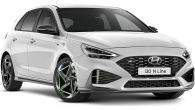










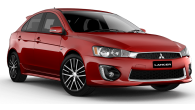

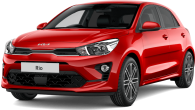


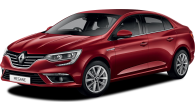
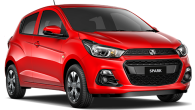
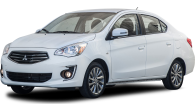






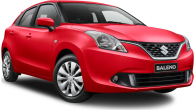





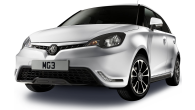


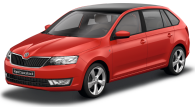

.jpg)


.jpg)

